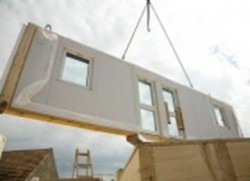If there is one thing we can learn from recent global political events, it is that financial markets and economies more generally, do not respond well to uncertainty. Manager at KPMG Joshua Southern argues that in order for construction projects to be successful, they must also provide certainty and confidence to both investors and client sponsors.
Offsite manufacturing, or "smart construction" is gaining recognition across the industry, with increasing numbers of ministers and industry leaders being quoted on its importance to construction in infrastructure and housing sectors. Some even go so far as to identify offsite manufacturing as a solution to the UK's housing shortage. However, for offsite manufacturing to meet its lofty ambitions, clients and suppliers must work together to unlock its "value of predictability".
Current industry performance metrics show that construction projects continue to perform poorly at predicting delivery timescales. In 2015, almost 50% of all onsite construction projects failed to reliably predict their programme completion dates.
What if construction employed a manufacturing approach?
Anecdotal evidence exists to demonstrate the benefits that offsite manufacturing can bring to our traditionally onsite industry, including:
- Faster delivery
- Better quality product
- Safer working sites
But just as "beauty is in the eye of the beholder", offsite manufacturing value must be viewed through the eyes of the project sponsor/ investor.
To better understand this value from the perspective of a commercial developer client, KPMG undertook independent research to assess the possible financial savings of construction of a central London office building using offsite methods. Our research found that the construction costs for the offsite-focused Leadenhall building project was £18 million higher than the hypothetical onsite comparison — equating to a 6% cost increase, but a six-month-shorter delivery programme, with evidence from Buildoffsite suggesting schedule savings of up to 60% are possible.
The time saved crucially alters the cost dynamics when comparing offsite to conventional build types. The financial benefits associated with the earlier start of rental revenue was found to create an additional income of £29 million based on recent central London office rental value.
Additionally, the six-month-shorter construction programme could save £7.5 million on construction cost inflation and save on borrowing interest for the project when comparing against traditional onsite construction.
This equates to a total project saving of £36 million (7%) against the hypothetical onsite base case.
Improved predictability of cost and programme
By developing and "locking down" a complete modularised and proven buildable design before construction on site begins, clients are able to predict project cashflow requirements and final forecasted costs with greater accuracy, helping to significantly offset the increased unit cost of offsite versus onsite solutions.
Catch 22
Much of existing demand for offsite construction is driven by the supply chain pushing offsite solutions to clients by consequence of site logistics, skills and schedule constraints. Client pulling solutions from the supply chain do exist, but are often inhibited by the misconception of offsite construction benefits.
Without the confidence of client demand for offsite solutions, offsite suppliers naturally struggle to make compelling business cases for speculative investment in offsite factories and business models. This lack of investment consequently leads clients to perceive there is insufficient capacity and capability in the supply chain to deliver innovative projects; thereby reducing market demand.
What next?
For offsite manufacturing to become the delivery model of choice across the industry, KPMG believes it must be client-led. The urgent need is for more clients to create the conditions where offsite solutions are actively considered and the business-specific case can be made.
Industry must acknowledge that innovation isn’t just about doing things incrementally better, it’s also, and perhaps more fundamentally, about recognising when transformative changes to the existing model are required. By embracing offsite manufacturing we can pave the way for a more progressive, data-driven and predictable industry that will boost industry profits and the wider economy.
Original link - RICS









